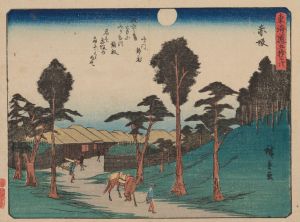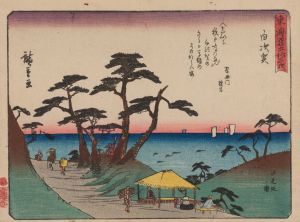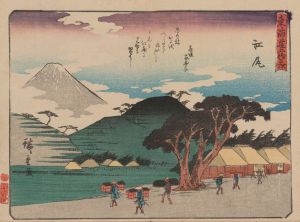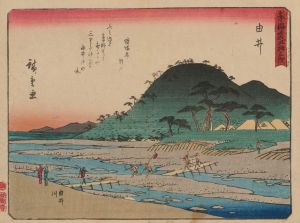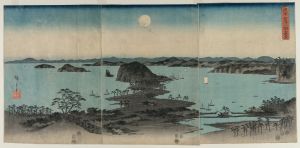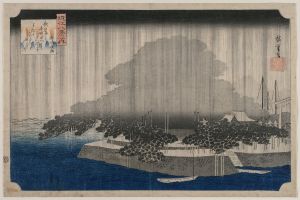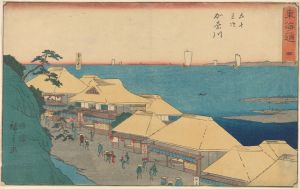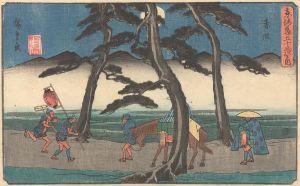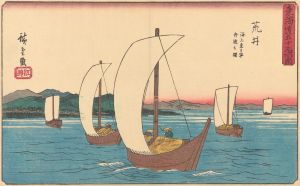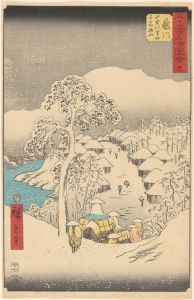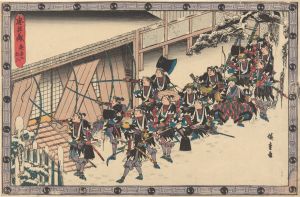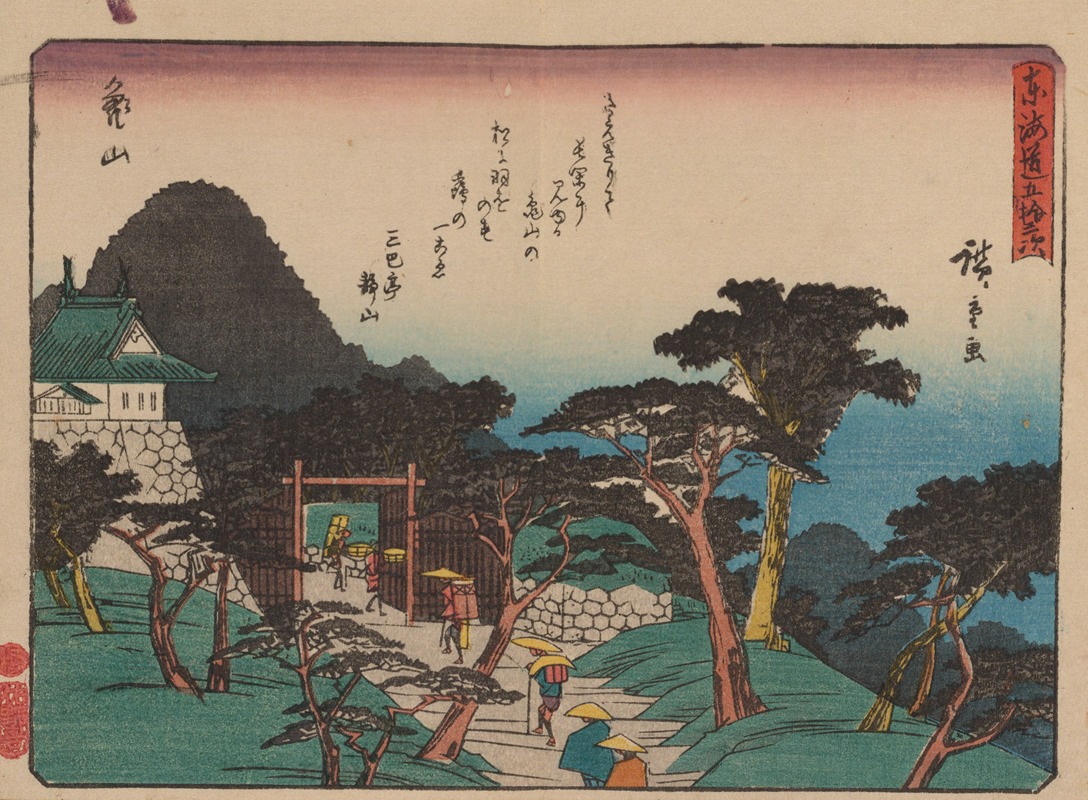
Tokaido gojusantsugi, Pl.47
A hand-painted replica of Andō Hiroshige’s masterpiece Tokaido gojusantsugi, Pl.47, meticulously crafted by professional artists to capture the true essence of the original. Each piece is created with museum-quality canvas and rare mineral pigments, carefully painted by experienced artists with delicate brushstrokes and rich, layered colors to perfectly recreate the texture of the original artwork. Unlike machine-printed reproductions, this hand-painted version brings the painting to life, infused with the artist’s emotions and skill in every stroke. Whether for personal collection or home decoration, it instantly elevates the artistic atmosphere of any space.
Andō Hiroshige, a renowned Japanese ukiyo-e artist of the Edo period, is celebrated for his landscape prints and depictions of everyday life. One of his most famous series is "The Fifty-three Stations of the Tōkaidō" (Tōkaidō Gojūsan-tsugi), which illustrates the scenic journey along the Tōkaidō road, the main travel and transport artery of Japan during the Edo period, connecting Edo (modern-day Tokyo) to Kyoto. This series consists of 55 prints, including the starting point at Nihonbashi in Edo and the terminus at the Sanjō Bridge in Kyoto, along with the 53 stations in between.
Plate 47 of this series, often referred to as "Kameyama: Clear Weather after Snow" (Kameyama yukibare), captures the station of Kameyama, a location known for its castle and steep, hilly terrain. Hiroshige's depiction is notable for its atmospheric perspective and the way it conveys the serene beauty of a snowy landscape. The print shows travelers making their way up a steep incline, with the imposing Kameyama Castle visible in the background, partially obscured by snow-laden trees. The scene is enveloped in a tranquil, almost ethereal quality, with the snow providing a stark contrast to the dark outlines of the trees and the travelers' clothing.
Hiroshige's use of color and composition in this print exemplifies his mastery of the ukiyo-e style. The subtle gradations of blue and white in the snow and sky create a sense of depth and distance, while the careful arrangement of figures and natural elements guides the viewer's eye through the scene. This print, like many in the series, reflects Hiroshige's keen observation of nature and his ability to capture the transient beauty of the landscape.
The Tōkaidō series was first published in the early 1830s and quickly became popular, both in Japan and abroad. Hiroshige's work had a significant influence on Western art, particularly on the Impressionists, who admired his innovative compositions and use of color. The series not only serves as a visual record of the Tōkaidō road and its stations but also offers insight into the cultural and social aspects of travel during the Edo period.
Hiroshige's prints, including Plate 47, are celebrated for their ability to evoke a sense of place and moment, transporting viewers to the serene and picturesque landscapes of 19th-century Japan. His work continues to be appreciated for its artistic merit and historical significance, offering a window into the past and the enduring beauty of Japan's natural scenery.





